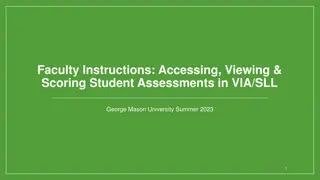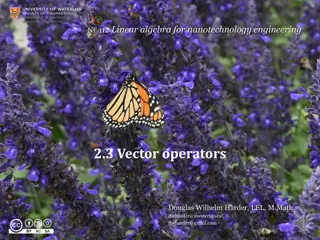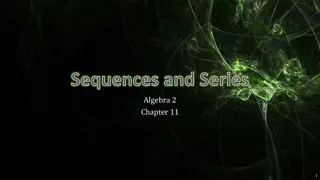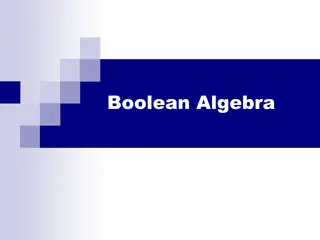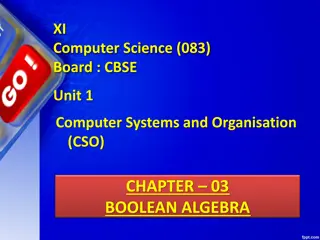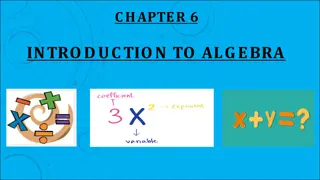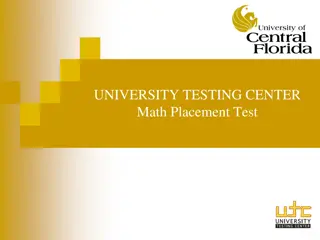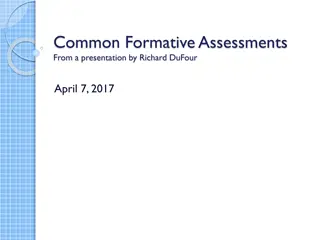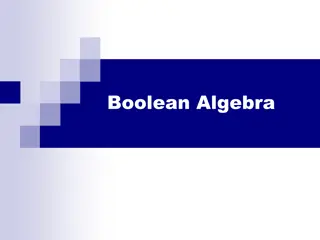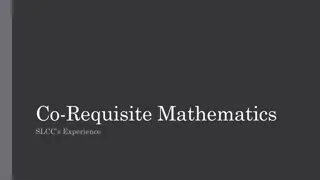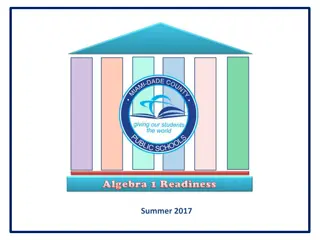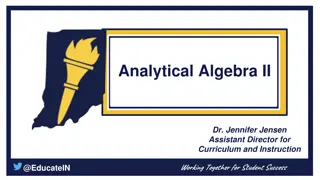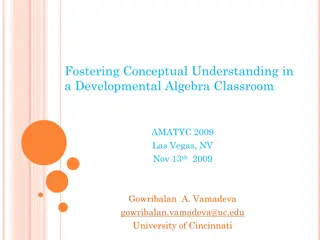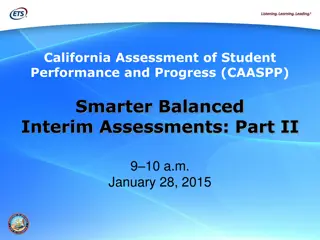Enhancing Student Understanding in College Algebra Assessments
Dr. Frank Wilson and Sue Steele from Chandler-Gilbert Community College discuss the issue of students memorizing procedures instead of actually understanding concepts in college algebra. They present a case study highlighting the importance of assessing conceptual mastery over procedural knowledge. The study reveals varying degrees of success in implementing transformations on graphs based on parameter understanding. The observations emphasize the critical need for students to grasp concepts like vertical reflection, vertical compression, and shifting to effectively manipulate graphs in algebra.
Download Presentation

Please find below an Image/Link to download the presentation.
The content on the website is provided AS IS for your information and personal use only. It may not be sold, licensed, or shared on other websites without obtaining consent from the author.If you encounter any issues during the download, it is possible that the publisher has removed the file from their server.
You are allowed to download the files provided on this website for personal or commercial use, subject to the condition that they are used lawfully. All files are the property of their respective owners.
The content on the website is provided AS IS for your information and personal use only. It may not be sold, licensed, or shared on other websites without obtaining consent from the author.
E N D
Presentation Transcript
What were you thinking? Asking questions that reveal understanding Dr. Frank Wilson Sue Steele Chandler-Gilbert Community College
The Problem Students often learn to memorize and mimic instead of think and apply If assessment questions focus only on procedural mastery, we may erroneously conclude a student with a weak conceptual understanding has achieved conceptual mastery
Case Study: College Algebra Students are given ? ? = 2 are asked to describe the effect of each of the parameters on the graph of f. Students who correctly identify the effect of the parameters have varying degrees of success in implementing the transformation on the graph of f + 2 and 3? ? 4
Student A (cont.) Looking for Vertical reflection Vertical compression by factor of 2/3 Shift left 4 units Shift up 2 units
Student B (cont.) Looking for Vertical reflection Vertical compression by factor of 2/3 Shift left 4 units Shift up 2 units
Student C (cont.) Looking for Vertical reflection Vertical compression by factor of 2/3 Shift left 4 units Shift up 2 units
Student D (cont.) Looking for Vertical reflection Vertical compression by factor of 2/3 Shift left 4 units Shift up 2 units
Observations To effect a vertical reflection on a graph, a student must have a conceptual understanding that points are reflected across the horizontal axis. To effect a vertical compression on a graph, a student must understand that output values are being reduced (scaled) by the given factor To effect a horizontal/vertical shift, a student must understand direction, magnitude, and recognize that a shift does not alter the shape of the graph only its position on the axes
Case Study: Arithmetic A volunteer group is putting together care packages to hand out at a local food kitchen. Each volunteer is given 30 molasses cookies, 48 chocolate chip cookies, and 36 sugar cookies to divide into boxes such that each box contains the same number of each kind of cookie. What is the greatest number of boxes the volunteer be able to fill?
Observations At the developing level, a student is able to discern that if finding a GCF in the form of a basic factor tree, the solution is easy to determine. At the competent level, a student is able to visualize the meaning of the GCF with diagrams or a factor tree that factors to prime factors. At the effective level, a student uses Venn Diagrams to demonstrate their thinking of the GCF
Observations At the mastering level, the student determines that the greatest number of boxes is based on the minimum number of cookies that can be placed into individual boxes. Based on the student that thinks outside of the box and focuses on the real-world situation, the student asks, Why would you package more than one of each cookie in the care package?
Writing conceptual questions Activity
Question prompts Write two questions that, if answered correctly, will demonstrate that a student has mastered the concept of the slope of a line Write two questions that, if answered correctly, will demonstrate a conceptual understanding of the product of two fractions
Sample Questions Slope The equation ? =9 convert temperature from C degrees Celsius into F degrees Fahrenheit. If air temperature increases by 10 degrees Celsius, by how many degrees Fahrenheit will the temperature increase? 5? + 32 may be used to To answer this question, the student must understand that each 5 degree increase in Celsius corresponds with a 9 degree increase in Fahrenheit. So a 10 degree increase in Celsius corresponds with an 18 degree increase in Fahrenheit.
Sample Questions Slope The graph of the equation y = 4 is shown in the figure. What is the slope of the line? Explain. To answer this question, the student must understand that slope is a comparison of the change in the output to the change in the input. There is 0 change in the output for any change in the input so slope is 0.
Sample Question Product of Fractions A pizza is half pepperoni and half mushroom and onion. Mike, who doesn t like onions, ate two thirds of the pepperoni side of the pizza. What fraction of the entire pizza did Mike eat? To answer this question, the student must determine 2/3 of 1/2 Mike ate 2/6 (1/3) of the entire pizza.
Sample Question Product of Fractions Forever 21 offered a Buy 2 Get 1 Free sale on selected items. A customer notices that the price of dresses on the clearance rack have already been reduced by 25% (1/4). To take advantage of the Buy 2 Get 1 Free sale she buys three equally priced dresses from the clearance rack. On average, what fraction of the original price (before all discounts) does she end up paying for each dress? To answer this question, the student must determine 2/3 of 3/4.
Sample Question Product of Fractions Dress 1 Dress 2 Dress 3 We start with the original price and remove 1/4 of the price. We buy three dresses: the first two at 3/4 price and the last for free. We pay 6/12 (1/2) of the original price per dress.
Best Practices from Literature In effective teaching, teachers use a variety of question types to assess and gather evidence of student thinking, including questions that gather information, probe understanding, make the mathematics visible and ask students to reflect on and justify their reasoning. Principles to Action, NCTM, p. 41



